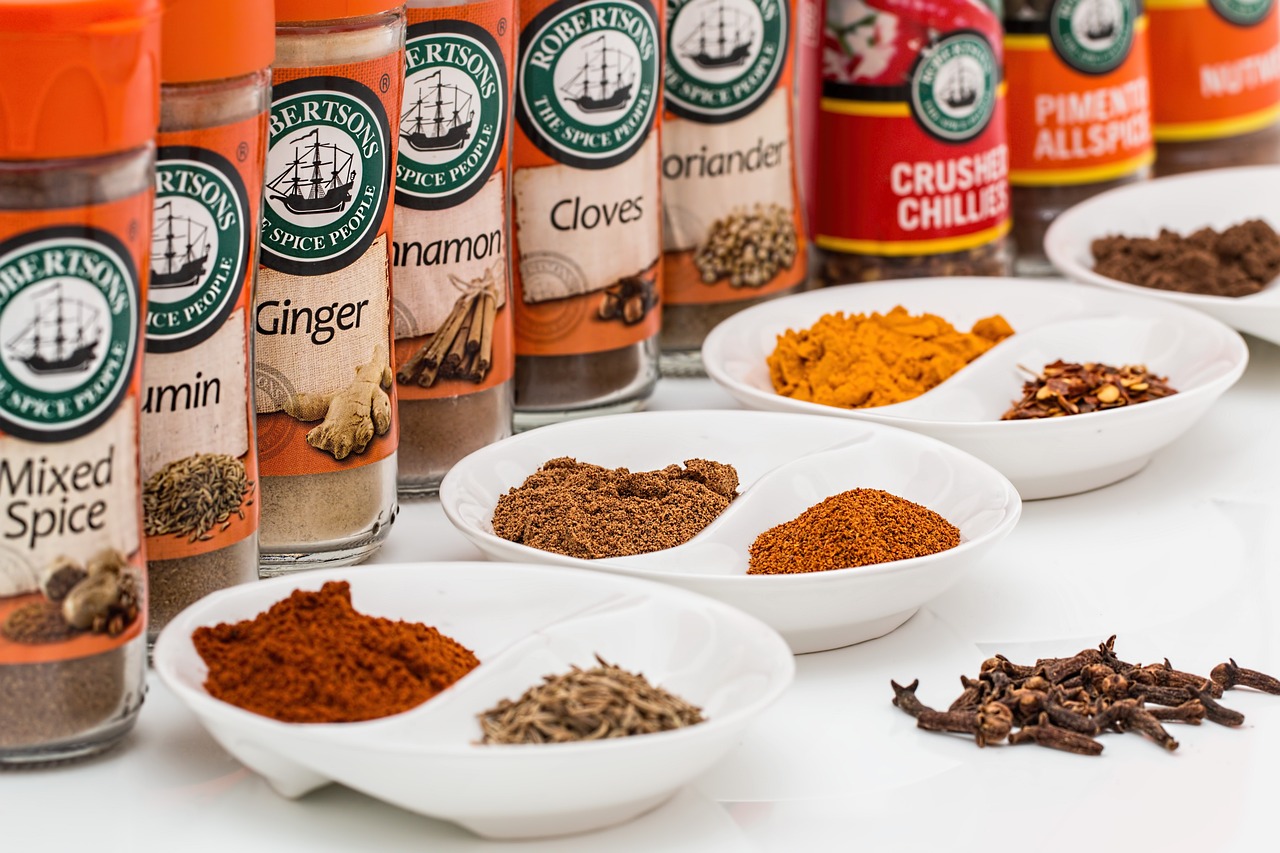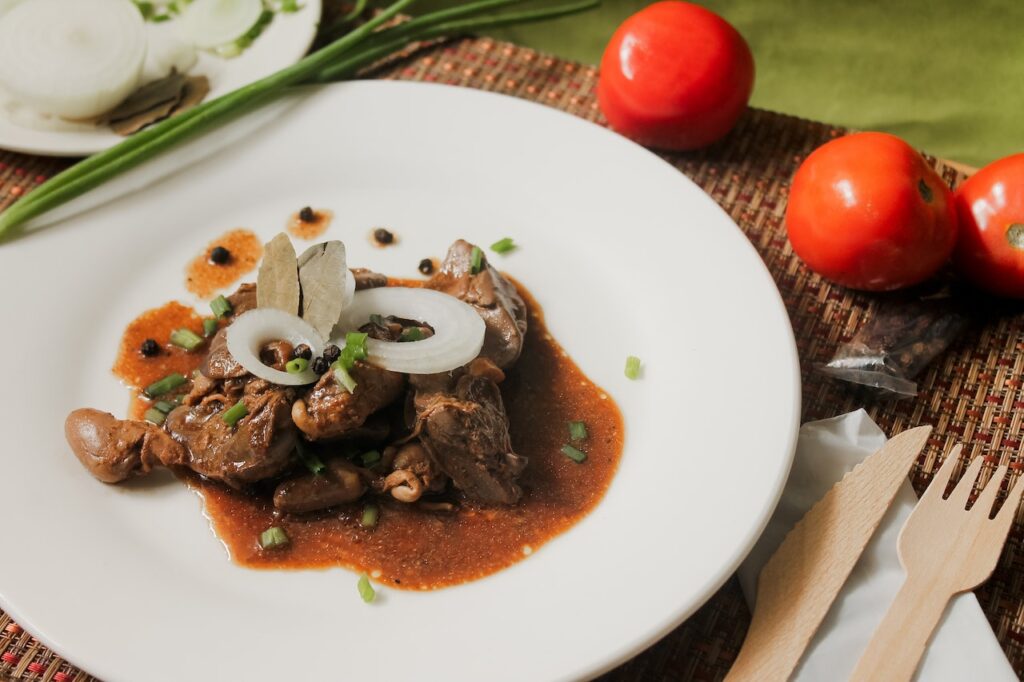Want the list of the best Asian seasonings? Asian cooking is renowned for its complexity and diverse range of flavors, which come from a rich blend of spices, herbs, and seasonings. From salty and spicy to sweet and fragrant, the right seasonings can transform any dish into a delicious masterpiece.
This post will help you find the best Asian seasonings to bring out the flavors in your cooking. We will provide a list of must-have seasonings for every Asian kitchen.
The Benefits Of Using The Best Asian Seasonings
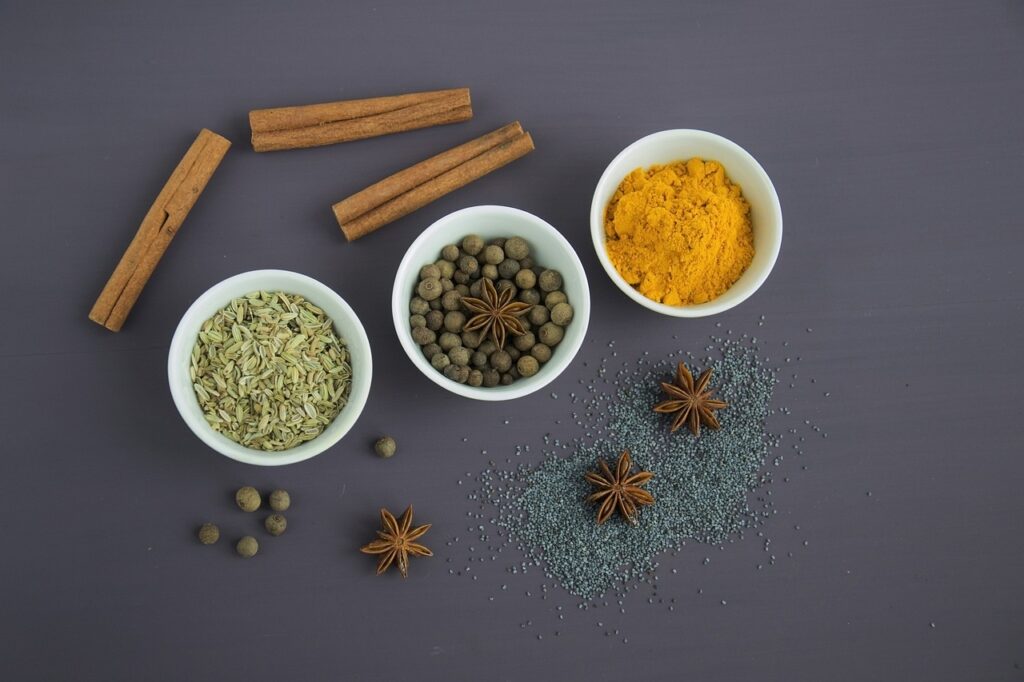
Using the best Asian seasonings offers a variety of benefits. Here are some reasons why you should invest in quality Asian seasonings:
❃Increased Flavor
Asian cuisine is known for its complex and powerful flavors. In order to achieve this complexity, many recipes require numerous ingredients and seasonings. Using high-quality ingredients such as spices, herbs, oils, vinegar, and other flavor enhancers. You can increase the depth and complexity of your dish. Additionally, quality seasonings such as soy sauce or fish sauce can add a subtle and unique flavor profile that makes each dish stand out.
❃Health Benefits
Many traditional Asian seasonings have been used for centuries due to their health benefits. For example, ground ginger has long been used in Chinese medicine as an anti-inflammatory agent. While turmeric has been used in Indian Ayurvedic healing practices to treat various ailments, including arthritis and stomach issues. In addition to these medicinal benefits, certain spices like cumin also boast high levels of antioxidants, which can help reduce inflammation.
❃Nutritional Value
Quality Asian seasoning also offers a wide range of nutritional benefits that can help improve overall health. For instance, sesame oil contains essential fatty acids which aid in digestion. While garlic offers an abundance of vitamins and minerals that boost immunity and provide anti-bacterial properties against common illnesses like colds or flu. In addition to essential nutrients, Asian seasonings can provide additional fiber, which aids in digestion and helps maintain healthy blood sugar levels.
❃Improved Texture
While many people associate Asian cuisine with bold flavors, they don’t often think about the texture, but it’s an essential element when creating delicious dishes. Adding quality herbs like lemongrass or galangal can give your dishes a unique texture while imparting additional flavor profiles that make them stand out. Furthermore, sesame seeds are a great addition to any recipe as they add crunchy texture without overpowering the taste of your dish.
❃Variety & Innovation
The best Asian seasoning provides access to various ingredients from different cultures worldwide. It allows for greater variety in your cooking style and potential opportunities for innovation in developing new recipes or techniques for making old favorites better than ever! From Japan’s miso paste to Taiwan’s black vinegar, countless options exist for incorporating unique flavors into any dish.
The Asian Spices Categories
Asian cuisine is known for its unique fragrant, pungent, and aromatic spices blend. Each type of spice brings a distinctive flavor that contributes to the overall taste of a dish. Let’s look at the three categories of Asian spices and explore how they each contribute to Asian cuisine.
Fragrant Spices
Fragrant spices typically provide mild sweetness or floral notes to dishes. Popular examples include cardamom, cinnamon, nutmeg, star anise, and cloves. You can use these fragrant spices alone in savory dishes like curries or sweet dishes like cakes and buns. Combining them with other ingredients, such as ginger or garlic, creates more complex flavors.
Pungent Spices
Pungent spices are usually spicy and have strong aromas when cooked. Popular examples include chili peppers, cayenne pepper, black pepper, Sichuan peppercorns, and mustard seeds. These aromatic spices add a kick to any dish and are often used in stir-fries or curries. Be sure to use them sparingly, though—too much can ruin the flavor!
Aromatic Spices
Aromatic spices are characterized by their strong scent and slightly sweet flavor profile. Popular examples include turmeric, ginger root, galangal root (Thai ginger), lemongrass stalks, coriander seed, cumin seed, fennel seed, bay leaves, star anise pods (Chinese anise), mace blades (the cover of nutmeg seed), cassia bark (Chinese cinnamon), saffron threads (dried stigmas from crocus flower). These aromatic spices are often used in soups and stocks but can also be used in curries or other savory dishes and sweet treats like cakes and cookies.
Each type of spice brings its flavor profile that adds complexity to dishes while still allowing the main ingredient’s taste to come through clearly.
List of the Best Asian Seasonings
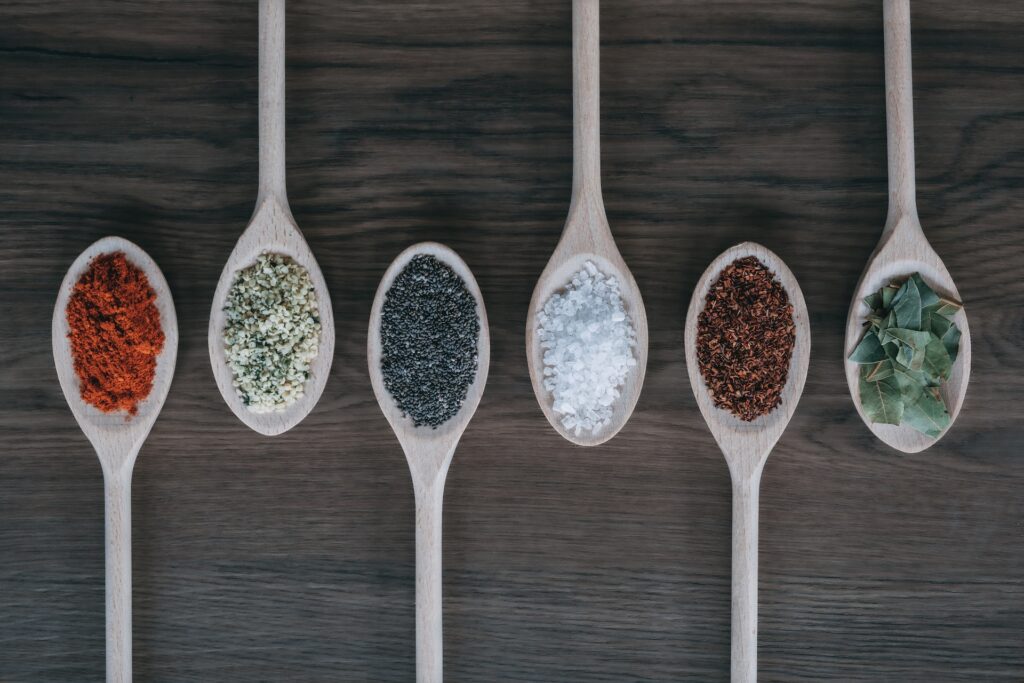
Now that you know the many benefits of using quality Asian seasonings, let’s look at some of the best seasonings to try. Here are our top picks for must-have ingredients in your Asian pantry:
🍾Soy Sauce
Soy sauce is a staple ingredient in many Asian dishes, from stir-fries to marinades. It has a rich, salty flavor can add depth and complexity to almost any dish. Soy sauce is made from fermented soybeans, wheat, and salt brine. It comes in several varieties, ranging from light (milder flavor) to dark (richer, more intense flavor).
🍾Galangal Root
Galangal root is often used as an alternative or complement to ginger in Southeast Asian dishes. It has an earthy flavor with hints of citrus and pine. The root is ground into powder form and added to curries or soups for extra flavor. It also pairs well with lemongrass, tamarind, and kaffir lime leaves for a unique combination of flavors that can’t be found anywhere else.
🍾Cloves
Cloves are small dried flower buds with a sweet, pungent aroma and flavor. They are commonly used in Chinese cuisine but can be found in other parts of Asia as well. Cloves are often used in savory dishes such as braised pork belly or beef stew but can also be used in desserts like apple pie or cinnamon buns for an added sweetness and depth of flavor.
🍾Five Spice Powder Mix
Five spice mix is one of the most popular seasonings in Chinese cooking because it adds complex yet subtle flavors to dishes such as dumplings, stir-fries, and marinades. This blend typically contains star anise, cloves, fennel seeds, Sichuan peppercorns, and sometimes cinnamon or ginger powder for added warmth and sweetness. A little goes a long way with the five-spice mix, so start with just a pinch at first until you get the desired taste you’re looking for!
🍾Cinnamon
Cinnamon is one of the oldest spices known to man and has been used since ancient times by many cultures worldwide, including those in Asia. This warm spice has a sweet yet woodsy flavor that works great in sweet and savory dishes like noodles or vegetable stir-fries. Cinnamon can also be used for baking cakes or cookies for an extra kick of flavor!
🍾Sesame Seeds
Sesame seeds have been cultivated since antiquity due to their nutty taste, making them perfect for adding nutty notes to salads or noodle dishes such as ramen noodles or cold sesame noodles. They are also commonly sprinkled on top of bread or pastries such as mooncakes, giving them an extra crunchy texture! Sesame seeds come either black or white depending on what type they were harvested from, but they have similar tastes, so don’t worry about making the wrong choice!
🍾Star Anise
Star anise is one of those spices that packs a punch when flavoring food! Its complex aroma combines notes of licorice, clove-like warmth, and slight sweetness, making it perfect for adding depth to broths, curries, or marinades without overwhelming other flavors present in the dish. Try using star anise whole instead of grinding it up so that its unique star shape will still be visible after cooking!
🍾Ginger Powder
Ginger powder is one of those classic ingredients that adds just enough zing without overpowering other components in your dish! Its slightly sweet yet spicy taste works great when paired with other spices, such as garlic powder or cumin, creating layers of deliciousness! You can also add ginger powder to stir-fry dishes towards the end, so freshness isn’t lost during longer cooking times!
🍾Turmeric
Turmeric has long been praised for its anti-inflammatory properties, but did you know this golden spice also adds amazing color and incredible flavor to curries? Turmeric pairs perfectly with coconut milk, giving off creamy yet bright tones while enhancing all other spices in your dish, creating beautiful harmony on your plate!
🍾Gochujang
Gochujang is a Korean staple seasoning made from chili peppers that give off hot yet sweet undertones thanks to its unique combination between sugar & fermented soybean paste, making this red paste incredibly versatile when it comes to flavor all sorts of cuisines from stews & soups, all way through pizza & pasta sauces! With gochujang, anything is truly possible!
🍾Szechuan Peppercorn
Szechuan peppercorns are native to China and have a distinct aroma and flavor that’s slightly fruity, floral, numbing, and slightly spicy. It has a warm, citrusy taste with a hint of spiciness that adds complexity and depth to many dishes. It can be used sparingly as a flavoring agent for grilled meats or even in desserts like ice cream and sherbet.
🍾Garlic Powder
Garlic powder is extremely versatile, as it can be used in savory and sweet dishes. It has a milder flavor than fresh garlic but still packs plenty of punch when used correctly. It is commonly used as an ingredient in marinades and stir-fry sauces, giving them an extra layer of flavor without overpowering.
🍾Doenjang
Doenjang is a fermented soybean paste that originated in Korea centuries ago. It has an earthy, umami-rich flavor that’s perfect for adding depth to soups, stews, marinades, or anything else you might want to add some depth too! It pairs well with other seasonings, such as garlic powder and sesame oil, for an extra punch of flavor.
🍾Cumin
Cumin is one of the most popular spices in Asia due to its warm, nutty flavor that works well with almost any type of dish. It’s excellent for adding complexity to curries or soups but also works well with vegetable dishes like stir-fries or roasted vegetables. Cumin adds great flavor and offers numerous health benefits, including aiding digestion and boosting immunity!
🍾Sesame Oil
Sesame oil isn’t just another cooking oil – it has a unique flavor profile that adds richness and depth to any dish you make! From salad dressings to marinades or steamed vegetables, sesame oil will take your dishes from good to great every single time! Plus, its high smoke point means you can use it for high-heat cooking without worrying about burning the oil or losing its beneficial properties.
🍾Fennel
It is an aromatic spice that has been used in both Indian and Chinese cuisine for centuries. It has a sweet licorice-like flavor, making it perfect for adding depth to curries and other savory dishes. Fennel can also be used in baking, as it can enhance the sweetness of desserts without making them overly sugary.
🍾Sansho Pepper
It is a Japanese spice made from ground Szechuan peppercorns. It’s known for its unique numbing sensation when eaten, which many people find pleasant. Sansho pepper adds a nice kick of heat and complexity to dishes like ramen and stirs fry.
🍾Oyster sauce
Oyster sauce is among the most popular condiments in Chinese cooking, especially in Cantonese cuisine. It’s made from oyster extracts, sugar, salt, soy sauce, and other ingredients, creating a rich, savory flavor perfect for noodles or vegetables.
🍾Cardamom Green
It is an essential ingredient in many Indian dishes like biryani or korma. It adds an earthy sweetness and hints of citrus and mint that elevate any dish it’s used in. Cardamom Green is best when fresh but can also be purchased pre-ground.
🍾Cardamom Chilli
Cardamom chili is another popular Indian spice blend that combines cardamom with chili powder, coriander seed powder, cumin seed powder, turmeric powder, and more! This combination offers intense flavors, including smoky heat with subtle notes of sweetness thanks to the cardamom. Perfect for curries or other spicy dishes!
🍾Dried Basil
This seasoning is used in Chinese and Thai cuisines and has an earthy, sweet flavor. It can be used as a garnish or added to stir-fries and soups. In order to get the most out of dried basil, it’s best to add it towards the end of cooking or just before serving, so the flavor stays intact.
🍾Fish Sauce
Fish sauce is essential in many Southeast Asian dishes, such as Pad Thai or Vietnamese pho soup. It adds a salty umami flavor that can’t be replicated with other ingredients. Use fish sauce sparingly, so you don’t overpower your dish with too much saltiness.
🍾Mirin
Mirin is a rice wine that adds sweetness to savory dishes like teriyaki sauce or noodle stir-fries. Its subtle sweetness complements other savory flavors perfectly and will take your dishes to another level of flavor complexity.
🍾Dashi
Dashi is a Japanese broth made from kelp (kombu) and bonito flakes (katsuobushi). It adds oceanic, umami flavor to Japanese recipes like miso soup or ramen noodles. You can buy dashi powder from stores or make it from scratch if you can access the ingredients. Make sure not to boil it too long because boiling dashi for too long will lessen its delicate flavor profile.
These are some of the most flavorful and versatile ingredients you can use in your cooking. Experiment with different flavors, appreciate different cultures and make tasty dishes that will delight your taste buds.
Best Asian Cuisine to Cook at Home
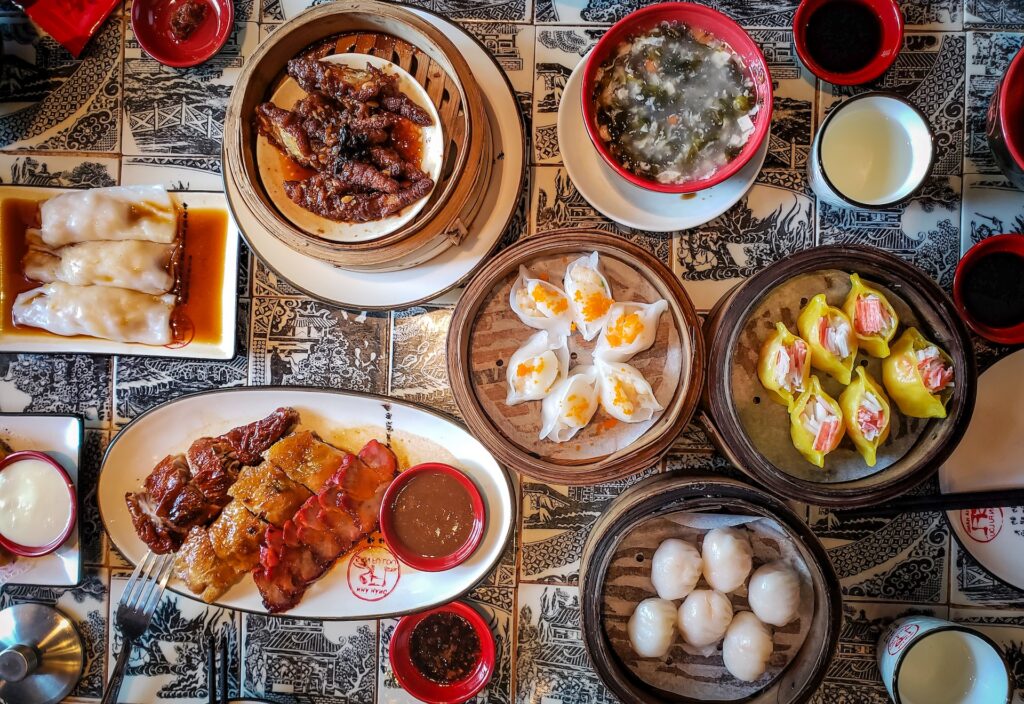
Now that you have the list of the best Asian seasonings, you may wonder what the best dishes to cook at home are. The best Asian cuisine to try includes Filipino, Malaysian, Indian, Chinese, Korean, and Japanese food. Wherein you can incorporate some of the best seasonings listed above.
Filipino Cuisine
Philippine cuisine is a unique blend of cooking styles brought by its settlers from all around the world. Spanish, Chinese, and American influences have all made Philippine cuisine what it is today. Filipino cooks have mastered combining flavors to create delectable dishes that tantalize the taste buds. Here are some of the best dishes you can try:
Sisig
There’s no better seasoning than calamansi juice when it comes to sisig. This tangy citrus fruit gives sisig a zesty flavor and helps cut through the richness of the pork. Another popular seasoning used in sisig is soy sauce, which adds a savory depth of flavor that pairs perfectly with the pork or chicken used in this dish. Serve this with rice for a complete meal!
Adobo
Adobo is one of the most popular dishes in Philippine cuisine, and it’s easy to see why! This dish uses traditional Asian seasonings such as garlic, bay leaves, vinegar, and soy sauce for an intense flavor profile that will make your mouth water. Add some chili peppers or freshly grated ginger into the mix for an extra kick of heat!
Kaldereta
Kaldereta is another classic Filipino dish incorporating several Asian seasonings, including soy sauce and fish sauce. Combining these two ingredients creates a rich, umami flavor that brings out the natural sweetness of beef or goat meat. To add more depth to your kaldereta, add some dried oregano and freshly ground black pepper into the mix!
Bicol Express
Bicol express is a spicy stew made with shrimp paste and coconut milk as its base ingredients. To bring out all those flavors, add some fresh ginger root and Thai chili peppers for added heat! You can also add some fish sauce for an additional layer of complexity to this already flavorful dish.
Sinigang
Sinigang is a traditional Filipino dish with souring ingredients like tamarind and calamansi and savory seasonings like ginger, garlic, onion, and fish sauce. The result is a truly delicious soup that packs a flavorful punch. What makes Sinigang even more special is its versatility and room for experimentation. You can experiment with several seasonings to bring out their desired flavor.
Malaysian Cuisine
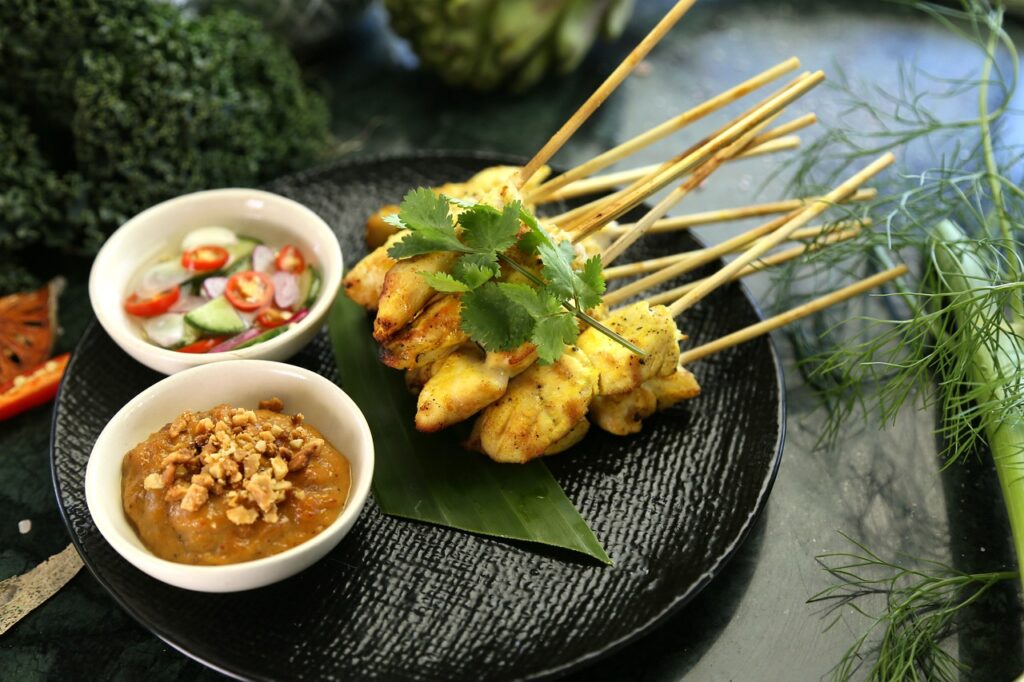
Malaysian cuisine is a beautiful blend of Malay, Chinese, and Indian flavors. Their cooks are known for their ingenuity in spices, creating unique flavor profiles that will tantalize your taste buds. The best seasonings for Malaysian dishes include tamarind paste, lemongrass, galangal root, cumin, and coriander. Here are some popular dishes that incorporate these flavors:
Nasi Lemak
This traditional dish is considered to be Malaysia’s national dish. Nasi lemak is a fragrant rice cooked in coconut milk served with various dishes such as anchovies, peanuts, egg strips, or cucumber slices. It is also served with sambal – a condiment made from chili paste that adds extra flavor and heat to the meal.
Satay
Satay is skewered meats marinated in spices like coriander powder, turmeric powder, cumin powder, and paprika powder before they are grilled over a charcoal fire. The most popular satay recipes include beef satay (satay daging), chicken satay (satay ayam) and mutton satay (satay kambing). Satays are usually served with ketupat (rice cubes) and sweet and spicy peanut sauce. They make fantastic appetizers for special occasions or gatherings!
Laksa
Originating from Penang Island in Malaysia, laksa is a flavorful noodle soup made with either thick yellow noodles or thin white vermicelli noodles. Served with shrimp paste (belachan) for an added kick to the flavor profile. Depending on your preference, laksa can be prepared using fish or chicken broth. Adding fresh seafood, such as prawns or squid, is also common for extra protein!
Kueh Lapis
Kueh lapis is a type of steamed cake made with coconut milk and sugar, giving it its unique texture and taste that you cannot find elsewhere! You can find this type of cake around Southeast Asia, but it originated in Indonesia. Kueh lapis can come in many colors depending on the ingredients used. Some common ones include pandan leaf extract (green), beetroot juice (pink), and butterfly pea flower extract (blue). It’s best eaten when warm, so don’t forget to warm it before serving.
Kari Ayam
Kari Ayam is one of Malaysia’s most beloved dishes! This fragrant chicken curry dish is incredibly easy to make at home. For an added kick, you only need basic spices such as turmeric powder, coriander powder, cumin powder, and chili flakes. You can also add other ingredients like potatoes or vegetables into the mix if desired. This will make the curry even more flavorful and filling. Kari ayam goes great with plain white rice, so give it a try if you’re looking for something comforting yet delicious.
Indian Cuisine
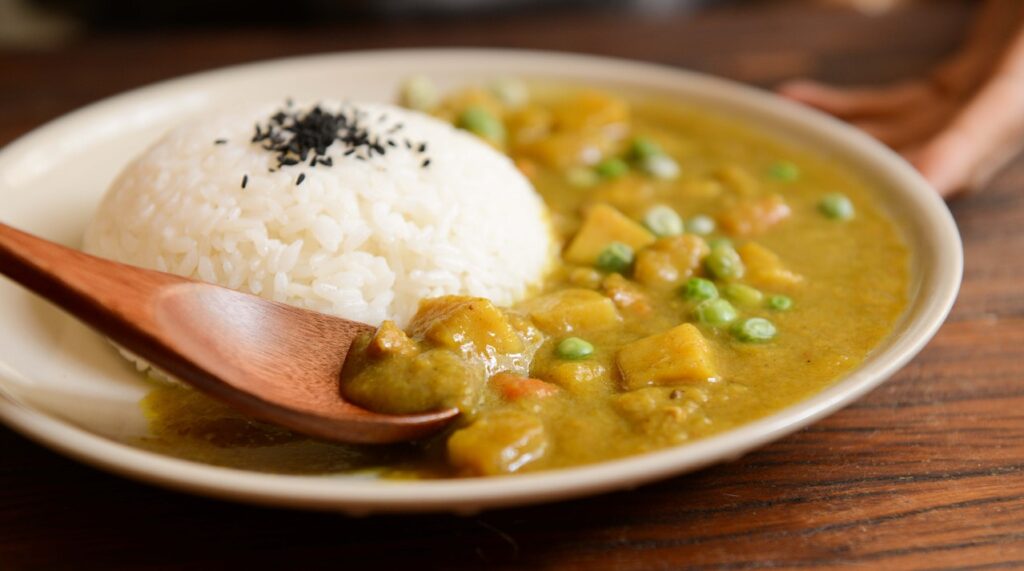
Indian cuisine is known for its bold flavors, intense spices, and vibrant colors. From creamy curries to fragrant basmati rice, there are endless possibilities for whipping up a delicious meal.
Chicken Tikka Masala
Chicken tikka masala is a classic dish made with chunks of chicken marinated in yogurt and spices, then cooked in a savory tomato-based sauce. The warm spice notes of garam masala, coriander, and cumin pair perfectly with the tomatoes’ sweetness, and the yogurt’s creaminess makes this cuisine perfect. Serve this dish with basmati rice or naan bread for an authentic Indian experience.
Butter Chicken
Who doesn’t love butter chicken? This creamy Indian dish is made by cooking chicken in a tomato-based gravy simmered with butter, cream, garlic, ginger, and select Asian seasonings like cardamom and cinnamon for an extra flavor boost. It has just enough heat from chili powder or cayenne pepper and tangy notes from lemon juice or tomato paste. Butter chicken pairs perfectly with steamed basmati rice or naan bread for a delicious meal any night of the week.
Vegetable Curry
Vegetable curry is one of the most popular vegetarian dishes in India. It’s typically made with potatoes, carrots, peas, bell peppers, and other vegetables cooked in a flavorful curry sauce made with coconut milk or yogurt and various Asian seasonings like turmeric, cumin seeds, coriander powder, garam masala powder, and more. Serve this dish over steamed basmati rice or naan bread for a satisfying vegetarian meal that even meat eaters will enjoy.
Samosa Chaat
Samosa chaat is an incredibly flavorful street food dish that combines spicy samosas (deep-fried pastry pockets stuffed with potatoes), chickpeas, and various chutneys (dipping sauces) for added flavor. It’s best served hot but can be enjoyed cold as well! This dish is perfect for sharing at parties or serving as an appetizer before dinner. Add some crunchy papri chips on top and some diced onions, tomatoes, and cilantro for extra flavor.
Biryani
Biryani is an aromatic rice dish cooked with layers of spices, including cardamom pods, cloves, and bay leaves. Along with vegetables such as peas, carrots and diced meats like chicken or lamb. The spiced rice is cooked separately from the meat before being layered together with ghee (clarified butter) to create an aromatic blend that will tantalize your taste buds. This hearty meal can be served alone or accompanied by raita (a cooling yogurt sauce) to balance out all those bold flavors.
Chinese Cuisine
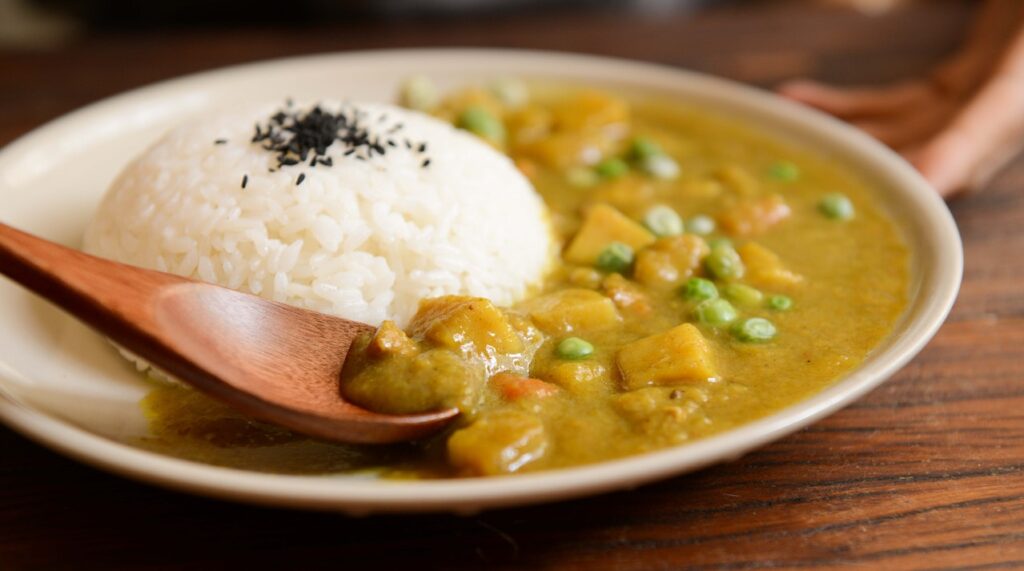
Chinese cuisine is one of the world’s oldest and most diverse types of food. Countless variations can be enjoyed from home, from steaming bowls of wonton soup to spicy Sichuan dishes. Here we will look at five dishes you can cook at home with some of the best Asian seasonings.
Kung Pao Chicken
Kung Pao chicken is a popular Szechuan dish characterized by its spicy flavor and abundance of peanuts. To create this dish, marinate chicken pieces in soy sauce, rice wine, and sesame oil before stir-frying them with garlic, ginger, scallions, chili peppers, and peanuts. The result is a flavorful dish that pairs well with steamed rice or noodles.
Egg Fried Rice
Egg fried rice is an easy-to-make classic that combines boiled white rice with scrambled eggs and various vegetables such as carrots, peas, and onions. Simply stir-fry the ingredients in a wok with some vegetable oil before seasoning it with soy sauce for a delicious meal that’s ready in no time!
Sweet & Sour Pork
Sweet & sour pork is another popular Chinese dish that combines sweet pineapple chunks and crunchy bell pepper strips with tender pork cubes. You should coat the pork with cornstarch and water before being deep-fried until golden brown. Then add the vegetables to your wok with some sugar, vinegar, and tomato ketchup to create the sweet & sour sauce!
Chow Mein
Chow mein is a noodle dish consisting of boiled egg noodles and various vegetables such as mushrooms, carrots, and cabbage. For added flavor, you can add meat such as beef or chicken to the mix for extra protein. Once all your ingredients have been cooked, season them with soy sauce for an authentic taste!
Dim Sum
Dim sum is a collection of small dumpling dishes typically served during brunch or lunchtime in China. Popular dim sum dishes include har gow (shrimp dumplings), siu mai (pork & shrimp dumplings), char siu bao (barbecued pork buns), Cheung fun (rice rolls) and wontons (pork dumplings). These tasty morsels are perfect for sharing with family or friends!
Korean Cuisine
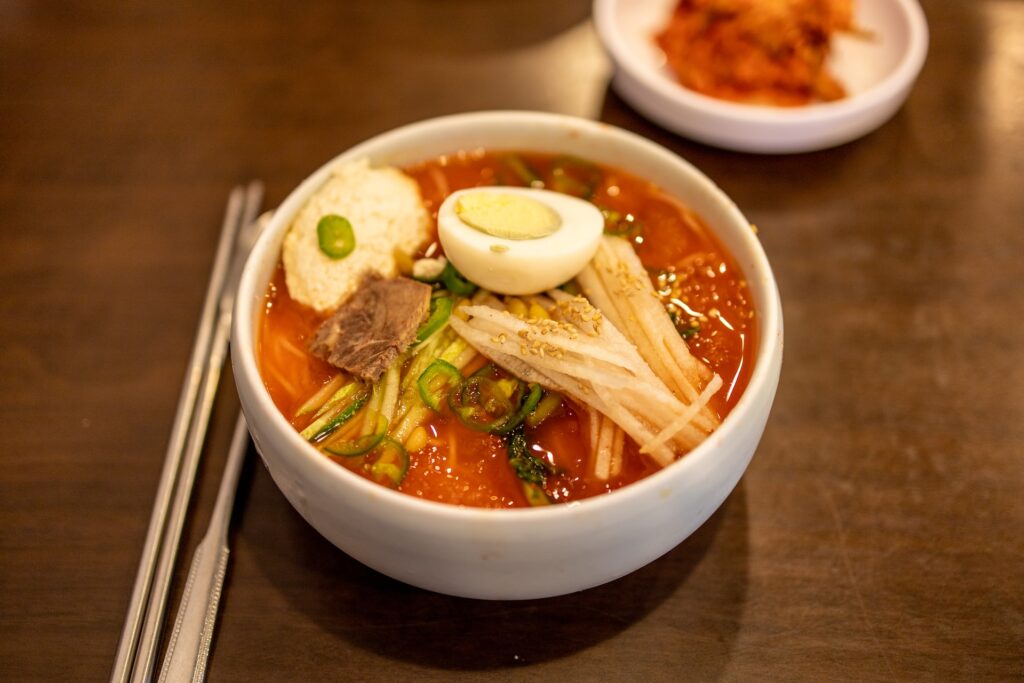
Korean cuisine offers a wide variety of dishes that will tantalize your taste buds. Here we will look at five dishes that you can cook at home.
Bibimbap
Bibimbap is a classic Korean dish that means “mixed meal.” It consists of sautéed vegetables, meat, and rice arranged in one bowl. Bibimbap is accompanied by a spicy sauce called gochujang (Korean chili paste) and served hot on the stove. This dish is easily customizable. Add your favorite vegetables, proteins, and seasonings for a flavor boost!
Bulgogi
Bulgogi is a popular marinated beef dish that is grilled over high heat. It is made with thinly sliced sirloin steak marinated overnight in soy sauce, garlic, brown sugar, sesame oil, ginger, and other Asian seasonings. If you’re feeling extra adventurous in the kitchen, add some kimchi to your Bulgogi for spice!
Kimchi Jjigae
Kimchi Jjigae is a traditional stew with fermented cabbage (kimchi) cooked with pork belly or beef broth and various spices. You can also add tofu or mushrooms if desired. The broth is simmered until its peak flavor – spicy and savory – then served piping hot alongside steamed rice.
Gyeran-jjim (Steamed Egg)
Gyeran-jjim is a simple yet tasty dish made by whisking together eggs with scallions before steaming them in a pan. This hearty egg casserole can be served as an appetizer or a side dish. You can customize this dish by adding any combination of vegetables, like mushrooms or bell peppers, for extra flavor and texture!
Kalbi-jjim (Braised Short Ribs)
Kalbi-Jjim is another popular Korean staple consisting of braised short ribs with potatoes and carrots cooked in an aromatic broth seasoned with garlic, gingerroot, onion, sesame oil, and other Asian seasonings. This food tastes amazing on its own and can also be used as an ingredient in other dishes like Kimbap (Korean sushi).
Japanese Cuisine
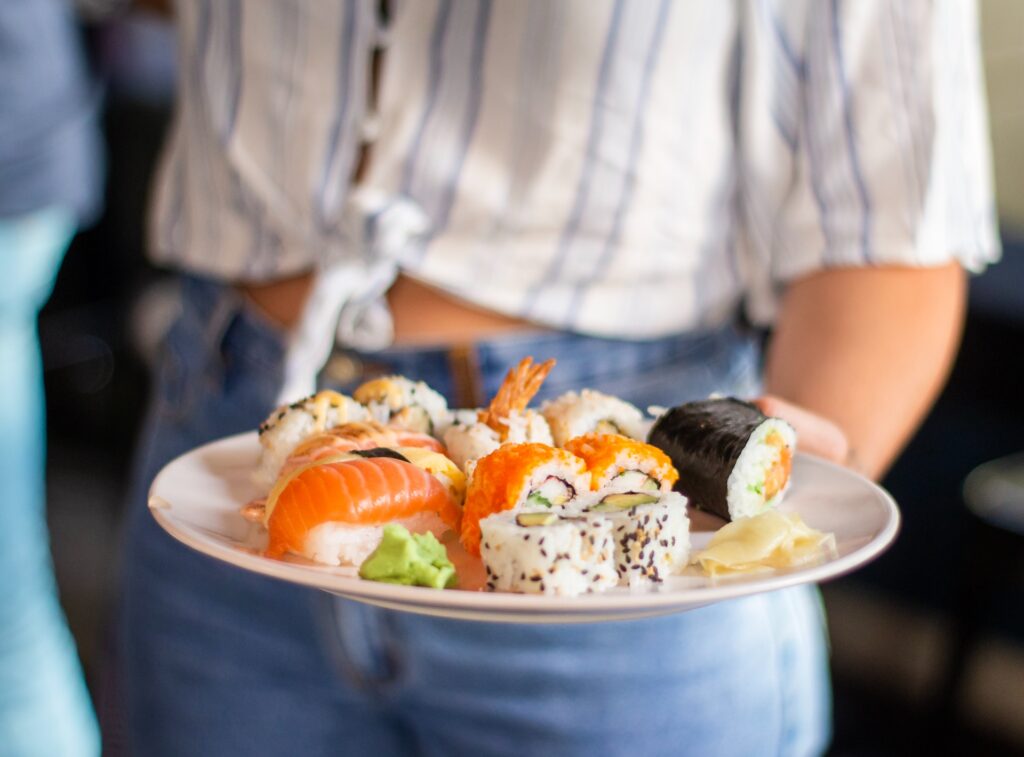
When it comes to the best of Asian cuisine, you can’t go wrong with Japanese food. Not only is it delicious, but it’s also surprisingly easy to make at home. With a few simple ingredients and some of the best Asian seasonings, you can whip up various dishes that will please your taste buds. Let’s look at five Japanese recipes you can make in your kitchen.
Teriyaki Chicken
This classic dish has chicken thighs marinated in a sweet and savory sauce. The key ingredients for this dish include soy sauce, sugar, sake, garlic, and ginger. Mix them and pour over the chicken before cooking in a hot skillet or oven until cooked through. Serve with steamed rice for a complete meal.
Yakisoba
This stir-fried noodle dish is one of Japan’s most popular comfort foods. To make yakisoba at home, all you need are ramen noodles (or other types of long noodles), vegetables like onions and cabbage, pork or beef (optional), and some seasonings such as soy sauce, mirin (sweetened sake), oyster sauce, and Worcestershire sauce. Fry everything together in a large skillet until the noodles are golden brown, and serve with pickled ginger on top!
Sushi
While sushi may seem intimidating to make at home, it’s quite simple if you have the right ingredients and tools. All you need is sushi-grade fish (such as tuna or salmon), the sushi rice (short-grain white rice seasoned with vinegar), nori seaweed sheets cut into strips, wasabi paste (optional), soy sauce for dipping, and pickled ginger for garnish. Once you have everything ready, just assemble the rolls by following instructions from an online tutorial or cookbook!
Tempura
Tempura is another popular Japanese dish with lightly battered vegetables or deep-fried seafood until crisp and golden brown. To make tempura batter at home using Asian seasonings, all you need is flour combined with baking powder or baking soda plus egg whites whisked together until smooth, then lightly coated onto the ingredients before frying in hot oil until crisp. Serve tempura accompanied by tonkatsu sauce for added flavor!
Gyoza
Gyoza is small dumplings filled with minced pork or beef mixed with garlic chives, then pan-fried until crisp on one side and steamed on the other until cooked through. For authentic-tasting gyoza, use sesame oil instead of vegetable oil when cooking them, and some soy sauce is added to give them more flavor!
These are just a few delicious Asian dishes you can make at home. With a little effort and some of the best Asian seasonings, you can easily whip up a variety of tasty dishes that will impress your friends and family.
Final Words
With all these best Asian seasonings above, it’s easy to see why Asian cuisine has become so popular in the Western world. When these flavorful seasonings are employed correctly, a connoisseur’s delight awaits. So next time you’re feeling adventurous in your kitchen or looking to expand your palate into a new culture – reach for some Asian-inspired seasonings! Bon Appétit!

